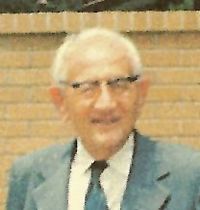George Pólya facts for kids
Quick facts for kids
George Pólya
|
|
|---|---|

George Pólya, circa 1973
|
|
| Born |
György Pólya
December 13, 1887 |
| Died | September 7, 1985 (aged 97) Palo Alto, California, U.S.
|
| Nationality | Hungarian |
| Citizenship | Hungarian Swiss (1918–1947) American (1947–) |
| Alma mater | Eötvös Loránd University |
| Known for | Pólya–Szegő inequality How to Solve It Multivariate Pólya distribution Pólya conjecture Pólya enumeration theorem Landau–Kolmogorov inequality Pólya–Vinogradov inequality Pólya inequality Pólya–Aeppli distribution Pólya urn model Fueter–Pólya theorem Hilbert–Pólya conjecture Jordan–Pólya numbers |
| Scientific career | |
| Fields | Mathematics |
| Institutions | ETH Zürich Stanford University |
| Doctoral advisor | Lipót Fejér |
| Doctoral students | Albert Edrei Hans Einstein Fritz Gassmann Albert Pfluger Walter Saxer James J. Stoker Alice Roth |
| Influences | E.T. Jaynes |
| Influenced | Imre Lakatos |
George Pólya (December 13, 1887 – September 7, 1985) was a very important Hungarian mathematician. He taught mathematics for many years. First, he was a professor at ETH Zürich in Switzerland from 1914 to 1940. Later, he moved to the United States and taught at Stanford University from 1940 to 1953.
Pólya made big contributions to many areas of mathematics. These included combinatorics (counting and arranging things), number theory (the study of numbers), numerical analysis (using math to solve problems with numbers), and probability theory (the study of chance). He is also famous for his work on heuristics, which are ways to solve problems. He also helped a lot with mathematics education, showing how to teach math better.
A Life in Mathematics
George Pólya was born in Budapest, which was part of Austria-Hungary at the time. His parents were Hungarian Jews who became Christians. George grew up to be an agnostic, meaning he wasn't sure about God. He earned his PhD in 1912 from Eötvös Loránd University. His main teacher was Lipót Fejér.
After getting his degree, Pólya became a math professor. He taught at ETH Zürich in Switzerland for many years. Then, in 1940, he moved to the United States. He became a professor at Stanford University. He stayed at Stanford for the rest of his career. Even after he retired, he kept working as a Professor Emeritus. He studied many different math topics. These included series, number theory, mathematical analysis, geometry, algebra, combinatorics, and probability. He was invited to speak at major math conferences around the world.
His Passing
George Pólya died on September 7, 1985. He passed away in Palo Alto, California, in the United States. He was 97 years old. His death was due to health problems after he had a stroke.
How to Solve Problems
Early in his career, Pólya wrote important math books with Gábor Szegő. These books were called Problems and Theorems in Analysis. They helped students and researchers with difficult math problems. Later, Pólya focused on how people solve problems. He wanted to find clear ways to help students, teachers, and even other mathematicians discover new things.
He wrote several books about problem-solving strategies. His most famous book is How to Solve It. In this book, Pólya gives simple steps and tips for solving all kinds of problems. These tips can be used for math problems or even everyday challenges. The book also has advice for teachers on how to help students learn math. It has been translated into many languages. Over a million copies have been sold. Many schools still use this book to teach problem-solving skills.
Pólya also wrote other books on this topic. These include Mathematics and Plausible Reasoning and Mathematical Discovery. His ideas even inspired early artificial intelligence programs. These programs tried to solve math problems like humans do.
His Lasting Impact
George Pólya's work had a big impact on mathematics and education. Because of his important contributions, several awards are named after him. These awards celebrate great work in mathematics.
- The George Pólya Prize was started in 1969. It is given by the Society for Industrial and Applied Mathematics (SIAM). It honors work in combinatorics and other areas Pólya was interested in.
- The George Pólya Award was created in 1976. It is given by the Mathematical Association of America (MAA). This award is for excellent articles that explain math clearly.
- The Pólya Prize was started in 1987. It is given by the London Mathematical Society (LMS). It recognizes amazing creativity and contributions to mathematics in the United Kingdom.
Also, Stanford University has a building named Polya Hall in his honor. This shows how much he is respected in the world of mathematics.
See also
 In Spanish: George Pólya para niños
In Spanish: George Pólya para niños
- Integer-valued polynomial
- Laguerre–Pólya class
- Landau–Kolmogorov inequality
- Multivariate Pólya distribution
- Pólya's characterization theorem
- Pólya class
- Pólya conjecture
- Polya distribution
- Pólya enumeration theorem
- Pólya–Vinogradov inequality
- Pólya inequality
- Pólya urn model
- Pólya's theorem
- Pólya's proof that there is no "horse of a different color"
- Wallpaper group
- The Martians (scientists)

